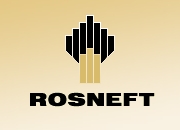Russia’s Rosneft seeks expanded ties with ONGC Videsh
08 Dec 2015
Russia's oil and gas major Rosneft is likely to join hands with India's flagship explorer ONGC Videsh Ltd (OVL) for more upstream projects. In September, OVL, the overseas arm of state-run explorer Oil and Natural Gas Corporation, had announced buying 15 per cent stake in Vankorneft (which runs the Vankor oil field in East Siberia) from the Russian firm for $1.25 billion.
 ''Rosneft plans to select a second partner in Taas-Yuryakh Neftegazodobycha, which will have positive effect on the project's development in the long term,'' said a Rosneft spokesperson. Taas-Yuryakh Neftegazodobycha, a Rosneft subsidiary, is developing the central block and the Kurungsky licence area of Srednebotuobinsky oil and gas condensate field, located in Sakha Republic.
''Rosneft plans to select a second partner in Taas-Yuryakh Neftegazodobycha, which will have positive effect on the project's development in the long term,'' said a Rosneft spokesperson. Taas-Yuryakh Neftegazodobycha, a Rosneft subsidiary, is developing the central block and the Kurungsky licence area of Srednebotuobinsky oil and gas condensate field, located in Sakha Republic.
''Collaboration in such a large-scale project as Vankor will allow establishing a brand new level of strategic cooperation between Rosneft and OVL. This will accelerate the development of partnership between the companies, in other large-scale oil and gas upstream projects in the region,'' said the Rosneft spokesperson.
The field's reserves under Taas-Yuryakh Neftegazodobycha areas has total 167 million tonnes of liquid hydrocarbons and 181 billion cubic metres of gas. There are proposed programme for the developmemt of the field that would reach the level of 5 million tonnes annually. In 2014, production of oil and gas condensate reached 1 million tonnes.
Currently, oil produced by Taas-Yuryakh is being marketed to Asian customers via the Eastern Siberia-Pacific Ocean oil (ESPO) pipeline.
On 19 June, Rosneft and BP signed final bidding agreements for a joint venture for the Taas-Yuryakh project, where the Russian explorer would sell 20 per cent stake to the UK firm. In addition, Rosneft also signed heads of agreement to sell 29 per cent in the asset to Skyland Petroleum Group.
Talking about advantages of investing in Russia, the spokesperson said that the investment attractiveness of Russia's energy sector is formed, among other things, through the mechanism of the flexible exchange rate. Amid a significant decline in global prices for hydrocarbons, this creates certain advantages to the Russian oil and gas sector in terms of costs and ensures the competitiveness of its new projects.
In 2014 Rosneft's liquid hydracarbons production hovered at 204.9 million tonnes. Of this, oil sales to third parties were 111.2 million tonnes, including 8.8 million tonnes sold in the domestic market. Volume of oil export amounted to 102.4 million tonnes. Supplies to Asia Pacific countries appeared to be the most attractive export channel and grew by 41 per cent year-on-year.
Rosneft claims that short-term changes in the market environment do not affect the explorer's projects; despite the worsening macroeconomic situation their economic efficiency will still be quite high. This is due to the efficiency enhancement initiatives made by the firm to maintain low unit costs, governmental support in the form of state-run programmes for simultaneous infrastructure development and the national favorable tax environment.
The cost-cutting framework includes the establishment of an in-house service sector and the development of Russian market for such services, which is achieved by attracting new partners and promoting servicing facilities.













.jpg)






.jpg)









